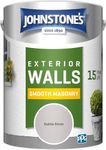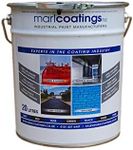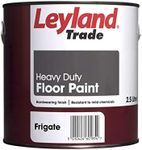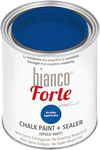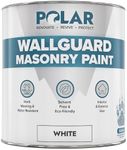Buying Guide for the Best Concrete Paint
Choosing the right concrete paint involves understanding the specific needs of your project and the environment in which the paint will be applied. Concrete paint is used to protect and enhance the appearance of concrete surfaces, whether they are indoors or outdoors. The right paint can prevent damage from moisture, chemicals, and wear, while also providing an aesthetic finish. To make the best choice, consider the surface you are painting, the conditions it will face, and the look you want to achieve.Type of PaintConcrete paint comes in various types, including acrylic, epoxy, and polyurethane. Acrylic paint is water-based, easy to apply, and suitable for indoor and outdoor use, making it a versatile choice for most projects. Epoxy paint is more durable and resistant to chemicals and abrasion, ideal for high-traffic areas like garages or industrial floors. Polyurethane paint offers excellent UV resistance and is great for outdoor surfaces exposed to sunlight. Choose the type based on the location and expected wear of the surface.
DurabilityDurability refers to how well the paint can withstand wear and tear over time. This is crucial for surfaces that will experience heavy foot traffic, exposure to the elements, or chemical spills. For high-traffic areas, opt for paints with high durability like epoxy or polyurethane. For less demanding environments, acrylic paints may suffice. Consider the expected use of the surface to determine the level of durability needed.
FinishThe finish of concrete paint affects both the appearance and functionality of the surface. Common finishes include matte, satin, and gloss. Matte finishes offer a non-reflective surface that hides imperfections, while satin provides a slight sheen and is easier to clean. Gloss finishes are highly reflective and can make colors appear more vibrant, but they may also highlight surface imperfections. Choose a finish that aligns with your aesthetic preferences and maintenance capabilities.
ColorColor is an important aesthetic consideration when choosing concrete paint. It can affect the mood and style of the space. Light colors can make a space feel larger and more open, while dark colors can add warmth and coziness. Consider the existing color scheme of the area and the desired effect when selecting a paint color. Additionally, some colors may fade more quickly than others, especially in direct sunlight, so consider UV-resistant options for outdoor use.
CoverageCoverage refers to the area that a specific amount of paint will cover, usually measured in square feet per gallon. This is important for estimating how much paint you will need for your project. Higher coverage means you will need less paint, which can be more cost-effective. Check the manufacturer's specifications for coverage rates and consider the texture and porosity of your concrete surface, as rough or porous surfaces may require more paint.
Drying TimeDrying time is the period it takes for the paint to dry to the touch and fully cure. This is important for planning your project timeline and ensuring the surface is ready for use. Fast-drying paints can be convenient for quick projects, but may require more careful application to avoid streaks. Longer drying times can allow for a more even finish. Consider your schedule and the conditions in which you are painting, such as temperature and humidity, which can affect drying times.
